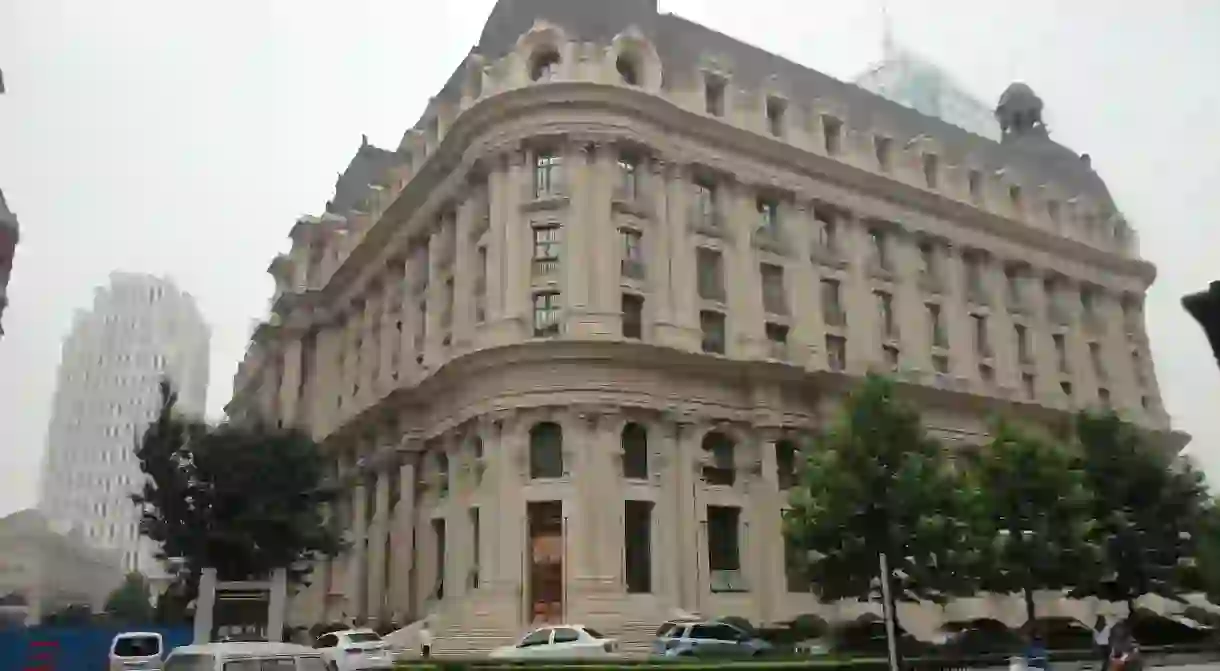12 Places to See Colonial Influences in Tianjin

International influence has long been prevalent in Tianjin since the mid-1800s, resulting in a myriad of concrete colonial influences across the city. Fortunately, dozens of these colonial sites still remain in near-pristine condition today. Some on this list you’ve likely heard of, and others you’ve yet to discover.
Following the Treaty of Tianjin, which ended the Second Opium War, Anglo-French colonialists reshaped this northeastern city into a pinnacle trade port. Since then, overseas cultural infusion lasted all the way until World War II. Tianjin was home to some of China’s first Western ideal institutions, like art galleries, ballrooms, lounges, nightclubs, cinemas, and theaters.
The Astor Hotel Museum
Museum
The Tianjin Race Club
Library, Swimming Pool, Theater
American Navy Club
The former American Navy Club was constructed in 1924 and served as an entertainment venue for soldiers. It was equipped with a cafe, bar, billiard rooms, restaurants, a casino, and a ballroom. The building was last used to house American soldiers following their 1945 WWII victory. With beautifully decorated arches and a wide-stretching balcony, this classical-themed building is now used as office space.
113 Jie Fang Bei Lu, Heping Qu, Tianjin Shi, China
Five Great Avenues
The British Ballroom
Among Tianjin’s very first colonial-era facilities was The British Ballroom, also known as The Club. Opened and funded in 1860 by the early immigrants of the British Concession, The British Ballroom served as an entertainment venue for its immigrants. It held all sorts of musical spectacles, tea parties, and social events. Reconstructed in 1904, the building houses massive window columns and exudes aspects the Victorian era of the late 1800s.
Italian Style Street
Tianjin’s version of Little Italy is the Italian Concession, which was built in 1902. Today it stands as a tourist sensation because of its numerous celebrity residences, chic bars, European-style restaurants, art galleries and gelato shops. At the center of the block is Marco Polo Square, and many intact fences and old-fashioned buildings still exude an Italian air. Aside from the street shopping and food, enjoy Italian performances, fashion, and other exhibitions along your journey.

Former Jaialai Sportscenter
Haihe Cultural Square
When you step outside the train station, the Haihe Cultural Square will be the first thing to inspire you. Save this site for nighttime to get the total feel of awe, as the Square is riverside and completely transformed when illuminated. You can even take a boat ride to see it. This revamped historical area has one magnificent skyline, with an eclectic share of classic European and Western architectural buildings.

Russo-Chinese Bank
Representing Russian interest in China from the Qing Dynasty up until the Chinese Revolution, this foriegn bank was created with French and Russian funds and opened in Tianjin in 1910. Today the building is used by The People’s Bank of China. This two-storied brick and wood structure was designed in typical classical Russian style. The interior wooden decor is well preserved and is as elegant indoors as its exterior.
Japanese Pavilion
Building
Xikai Catholic Church
The most prominent European colonial religious structure in Tianjin, and largest church in north China, is XiKai Church, also known St. Joseph’s Church. Located downtown, this cathedral was built in 1916 with imported bricks from France. Its interior pastel walls convey its Neo-Byzantine style, along with a plethora of art, statues, and paintings. Of both French and Roman influences, Xikai is the pinnacle Catholic church. Xikai is still much alive today with bilingual masses every Sunday.

Club Concordia
Club Concordia was built in 1907 and was also known as The German Club. Mainly serving as a venue for political, recreational, and social activities for German colonists, the term “Concordia” is inscribed into the second floor. The word means “for all people joining for a common purpose.” This elegant, three-story brick building portrays the architecture of its Nordic inspiration.













